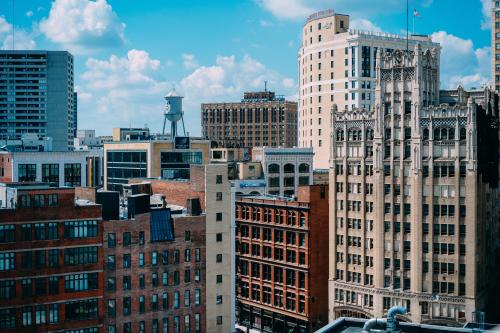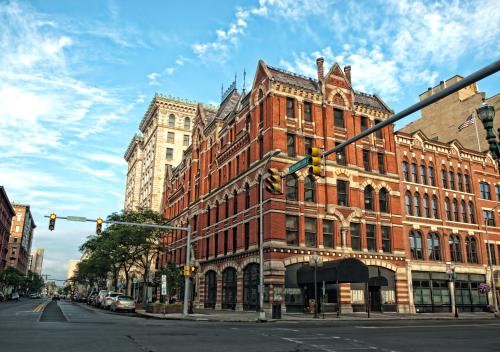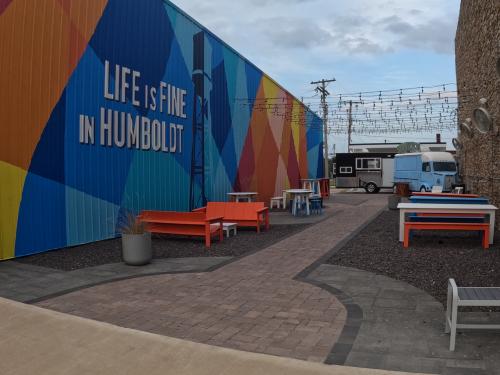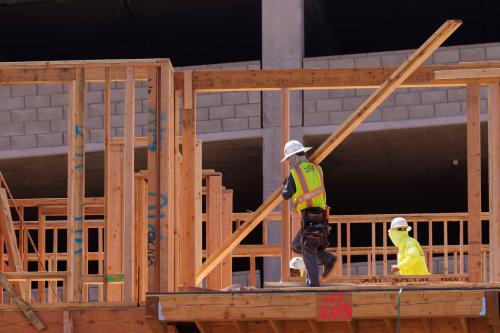Table 1 was amended on May 30, correcting the city of Erie’s state location.
The recent opening of the National Memorial for Peace and Justice in Montgomery, Ala. provided yet another reminder of America’s long and tragic history of white supremacy.
That opening came on the heels of groundbreaking new research from the Equality of Opportunity Project that highlights racism’s continuing economic impacts. The research finds that even among children who grow up next to each other, with parents who earn similar incomes, black boys fare much worse than white boys as adults. Controlling for differences among individuals and households cannot explain away these significant racial disparities.
Perhaps nowhere is the persistence of those disparities as evident as in America’s older industrial communities (OICs), many of which have begun to stabilize and grow again. Absent concerted efforts to close those disparities, their precarious renewal may be short-lived.
Predominantly located in the Northeast and Midwest, these once mighty factory cities grew and prospered through the first half of the 20th century, in part due to the Great Migration of African-Americans who powered their steel foundries, breweries, and auto plants. They were drawn by the manufacturing jobs these cities offered, as well as pushed away from the South by declining agricultural jobs and the pervasive climate of racial violence memorialized in Montgomery.
For all the opportunity these industrial cities represented, they did not offer an environment of economic or social equity for black migrants. The black working and middle classes lived in racially segregated neighborhoods. Their children attended racially segregated schools. Many faced different forms of the same racial hostility they had hoped to escape in coming north. Then, as manufacturing began to decline in these cities in the 1970s, white workers and families had opportunities and means to seek housing and jobs elsewhere that discriminatory lending and employment practices had systematically denied black citizens.
For all the opportunity these industrial cities represented, they did not offer an environment of economic or social equity for black migrants.
Decades later, the color lines in these older industrial cities remain stark. Notwithstanding recent upticks in immigration, their combined population remains largely white (59 percent) and black (21 percent). Residentially, they are 30 percent more racially segregated than the national average. That segregation extends to the workplace; workers of color in OICs are more heavily concentrated in low-paying fields like sales and personal services than their counterparts elsewhere. A more than 60 percent gap separates typical white and nonwhite household incomes in OICs, well above the 35 percent gap nationally.

If the consequences of those disparities were limited to these cities’ African-American communities alone, perhaps they would be easier for some to ignore. But these gaps have larger reverberating effects on the local economy that threaten wider progress and prospects.
Consider the case of Baltimore. The city’s typical white household earned $72,500 in 2016, well above the national median of $58,000. Its typical black household earned only $37,000. Among the 70 older industrial communities our report identifies, Baltimore had the largest college degree attainment disparity—36 percentage points—between whites and blacks. Judged by the economic status of its white population alone, Baltimore would look like one of America’s most successful cities. But those individuals represent only one-third of the city’s population. As a result, overall median household income in Baltimore is just $47,000.
Baltimore is hardly an outlier. In more than half (39) of the 70 OICs nationwide, white median household incomes exceed the national figure of $58,000. Yet more than half of those cities (21) have overall median household incomes below that figure. The counties containing Cincinnati, Louisville, Milwaukee, Pittsburgh, Providence, and Syracuse, along with more than a dozen others, repeat this pattern. Each exhibits a yawning disparity between typical household incomes for whites and people of color, from a 52 percent gap in Davenport, Iowa, to a 142 percent chasm in Newark, N.J.

Low incomes overall in a city equate to less money available for schools, transportation, parks, public safety, and economic development. They also make a city less attractive for private investments that create jobs and amenities. In short, a lack of wider economic prosperity in a city has negative consequences even for its economically better-off groups.
Some older industrial cities are beginning to grow again, and attracting new residents with higher incomes. But in-migration alone will not, and should not, solve their prosperity challenges. Nor can they rely on their existing white residents to power much additional growth; 80 percent of working-age whites in Baltimore, Milwaukee, and Pittsburgh are already employed. Only by explicitly providing groups long excluded from local prosperity—particularly African-Americans—with pathways to better jobs, higher incomes, and wealth-building opportunities will these cities be able to deliver a higher quality of life for everyone.
Local innovators are showing it’s possible. A Brookings event last week highlighted promising innovations in technology entrepreneurship and training that are working to engage young African-Americans in a fast-growing, lucrative segment of the economy, one that can play to older industrial cities’ considerable technological strengths. Sustained, committed efforts of this kind will be needed to spark more widespread growth and prosperity in these places, and to deliver fully on the promise that they represented for African-American migrants a century ago.






Commentary
To succeed, older industrial cities must overcome their stark color lines
May 7, 2018